Create a Dependent Key
Last updated 19/03/2024
To create a dependent key, you must have an inheritance scenario in your database. The common fields are stored in the parent table and the children tables will inherit these fields from the parent table. After you have named your table and added the primary key, perform the following steps to create a dependent key. If you have not added a table in Five before, please refer to the chapter Add a Table.Scenario
The diagram below shows the common fields are stored in the Entity table and it has an EntityType field. This field will be used to store whether the type is a customer or a contact. The Customer and Contact tables are the children tables and can both inherit the fields from the Entity table. The primary key in the children tables become the foreign key to the parent table.
Figure 1 - Inheritance
Prerequisites
- Add the parent table.
- Add the common fields in the parent table.
- Add a Type field in the parent table.
Add the Child Table
1. Click the Add Item button.2. Click the lookup icon in the Database field and select a database.
info
If you only have one database for your application, Five will automatically populate it in the Database field. If you are working in Local, you
cannot have multiple databases in one application, so you will not see the Database field.
3. Type an ID for the child table in the Data Source ID field.
4. Type a name in the Table Name field.
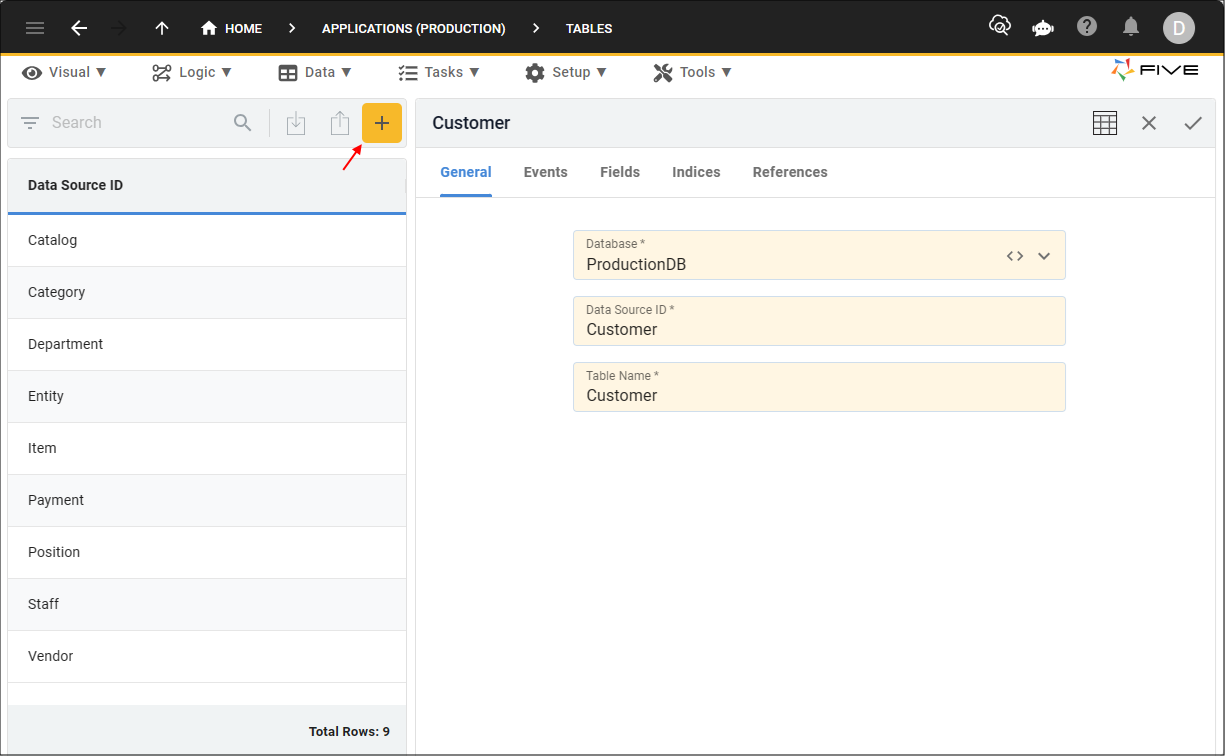
Figure 2 - Add a child table
Add the Primary Key Field
5. Click the Fields tab.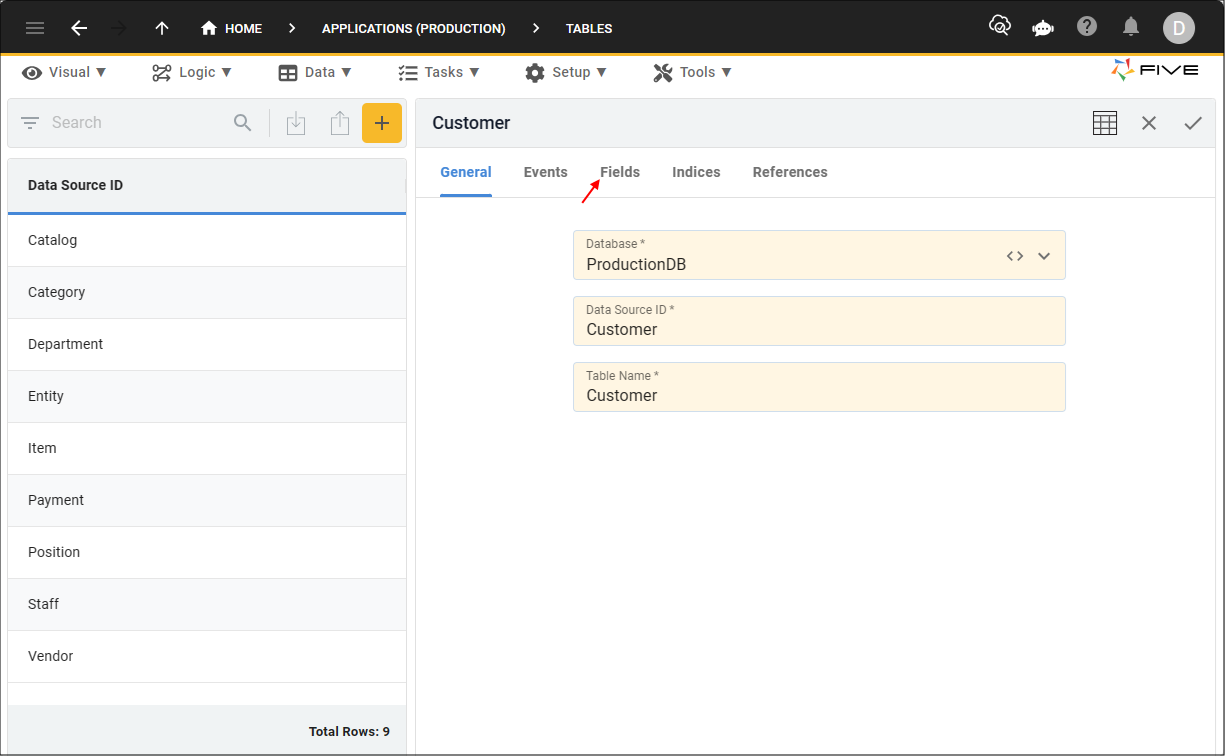
Figure 3 - Fields tab
6. Click the Add Fields button.
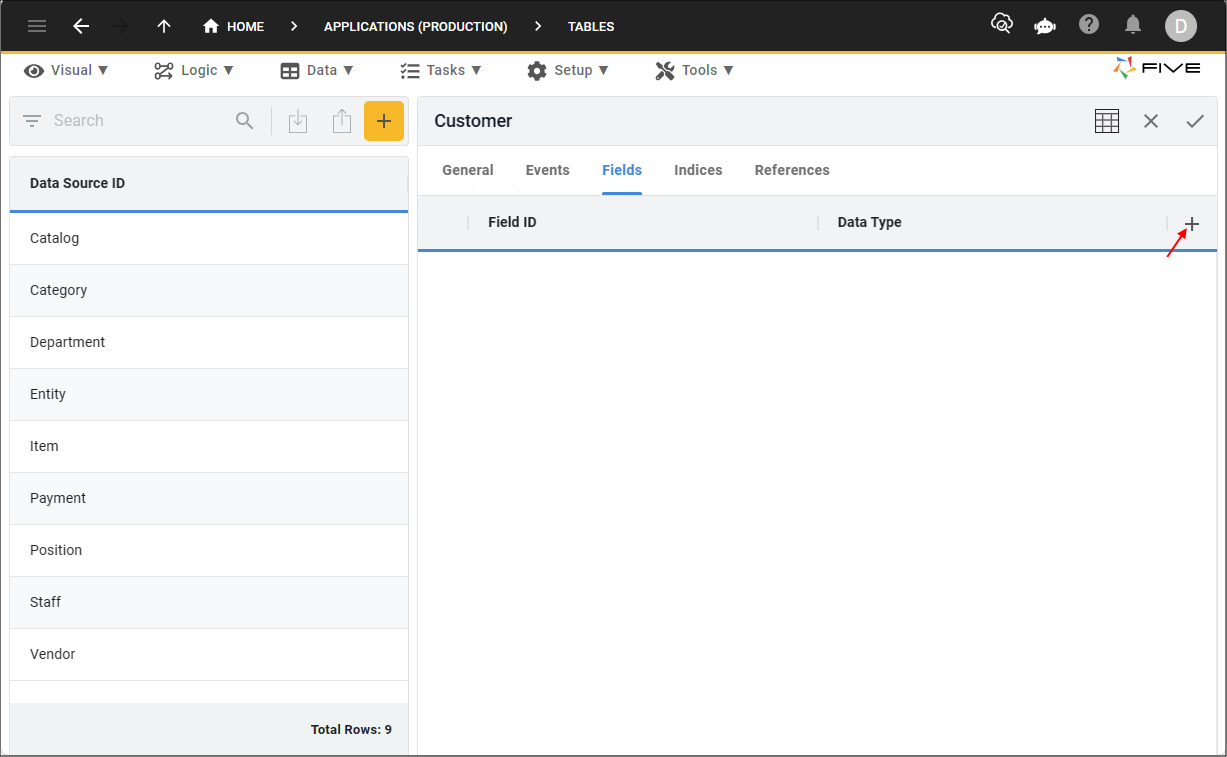
Figure 4 - Add Fields button
7. Type an ID in the Field ID field.
8. Click the lookup icon in the Data Type field and select GUID.
9. Click the Generated switch.
10. Click the Required switch.
11. Click the lookup icon in the Default Display Type field and select _Lookup.
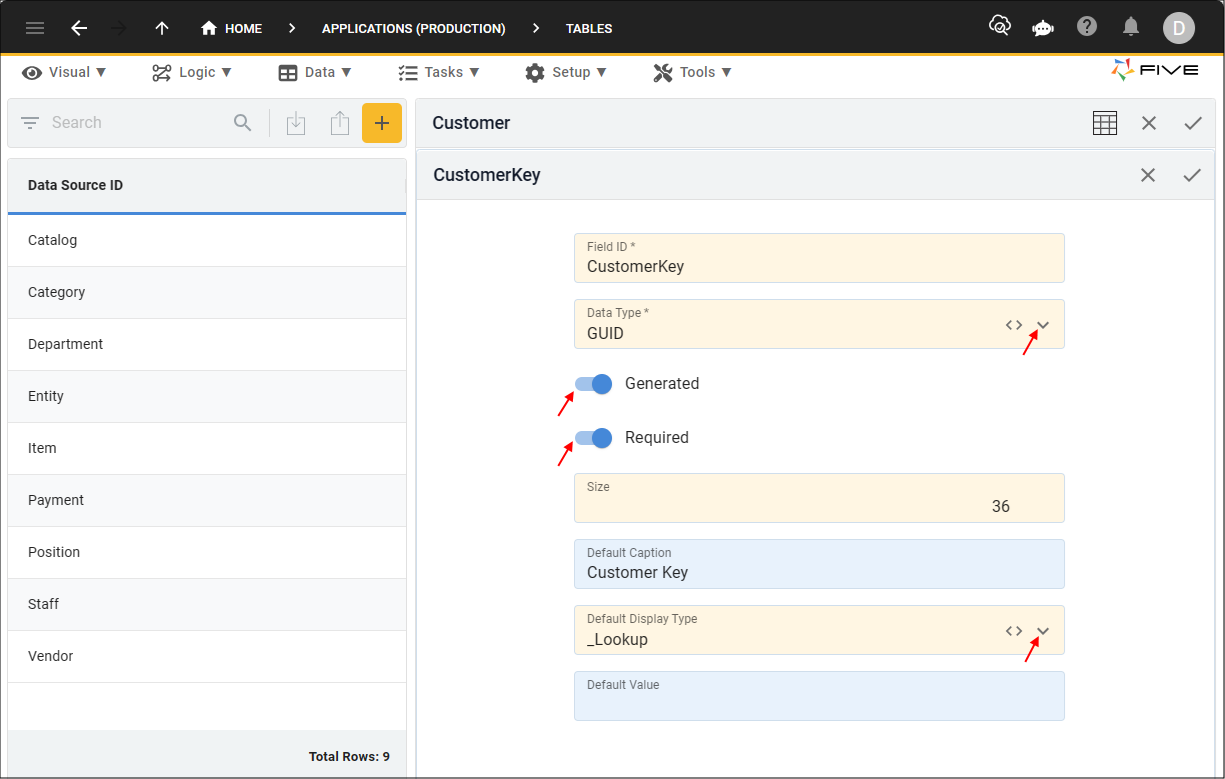
Figure 5 - Add the primary key field
12. Click the Save button in the form app bar.
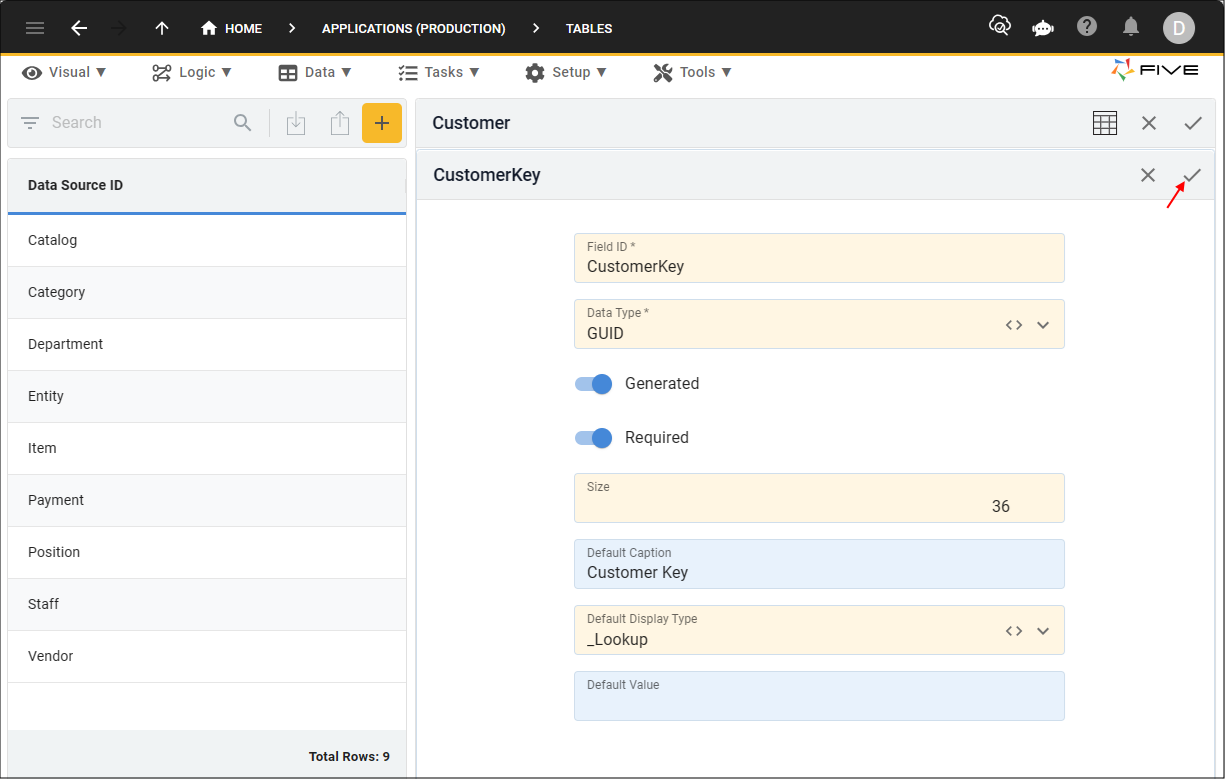
Figure 6 - Save button
Add the Primary Key
13. Click the Indices tab.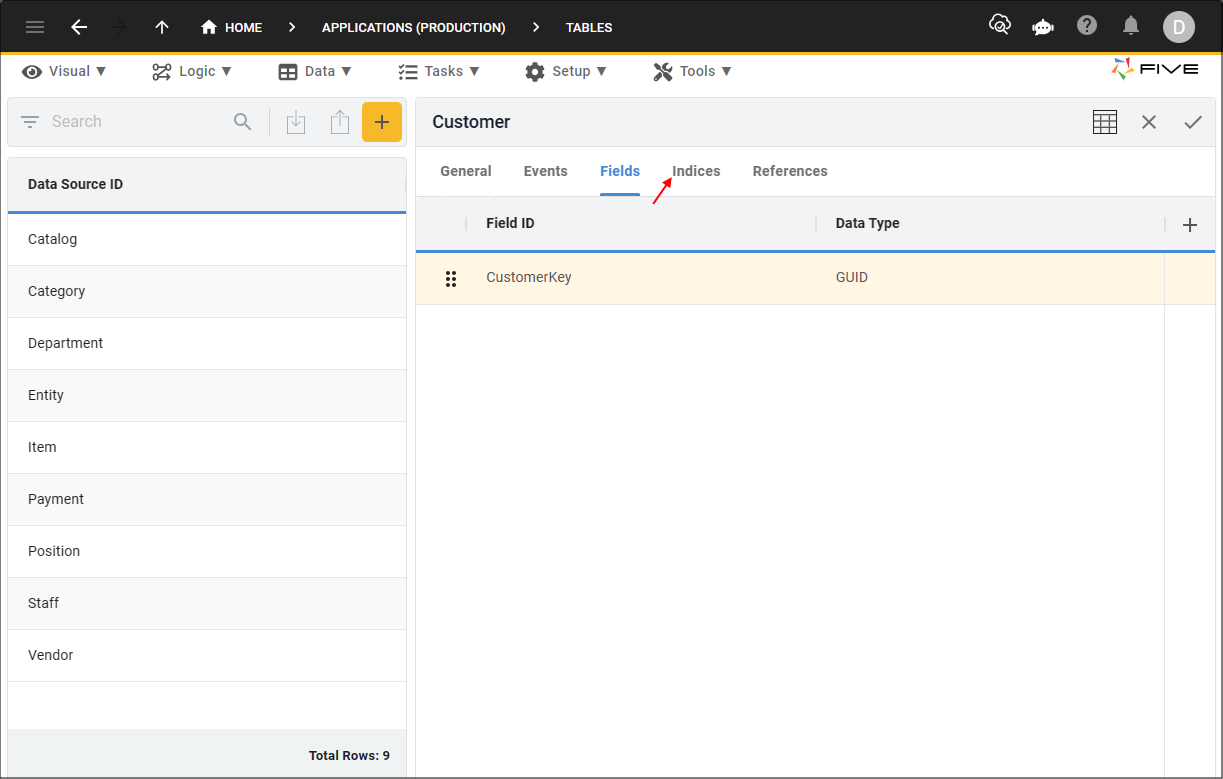
Figure 7 - Indices tab
14. Click the Add Indices button.
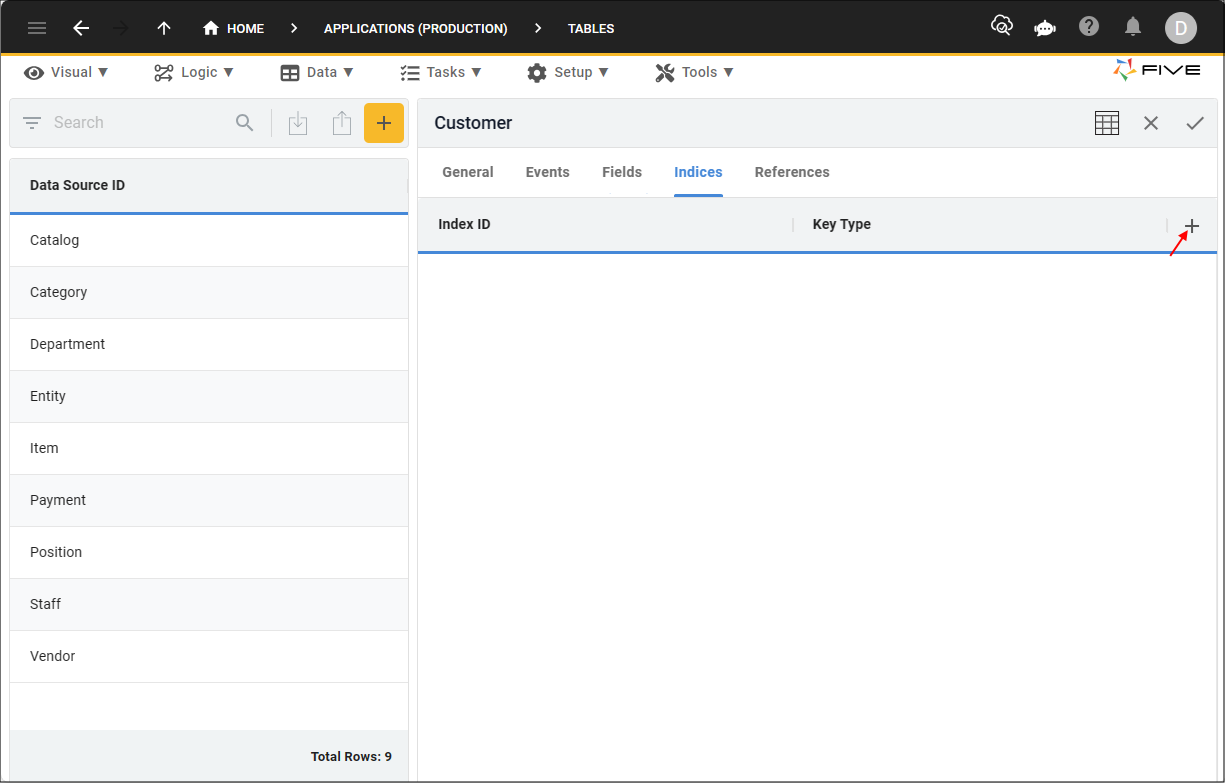
Figure 8 - Add Indices button
15. Type an ID in the Index ID field.
16. Click the lookup icon in the Key Type field and select Primary.
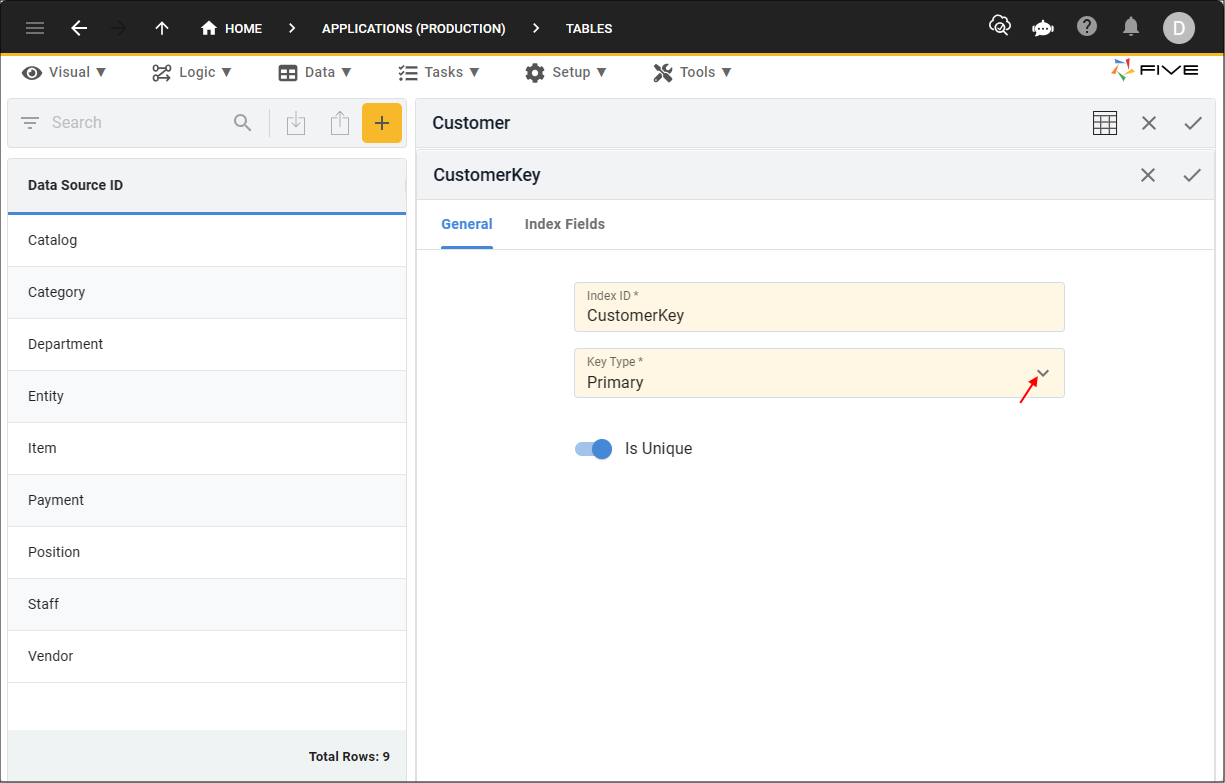
Figure 9 - Add the primary key
17. Click the Index Fields tab.
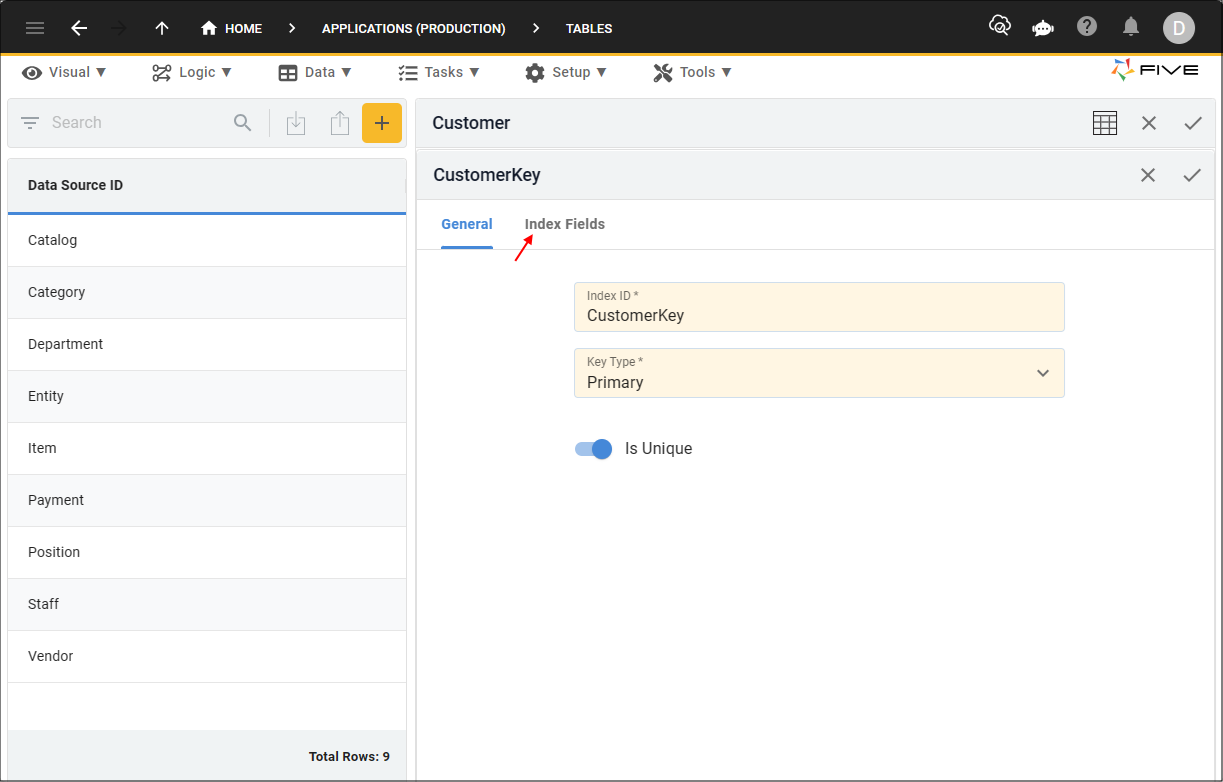
Figure 10 - Index Fields tab
18. Click the Add Index Fields button.
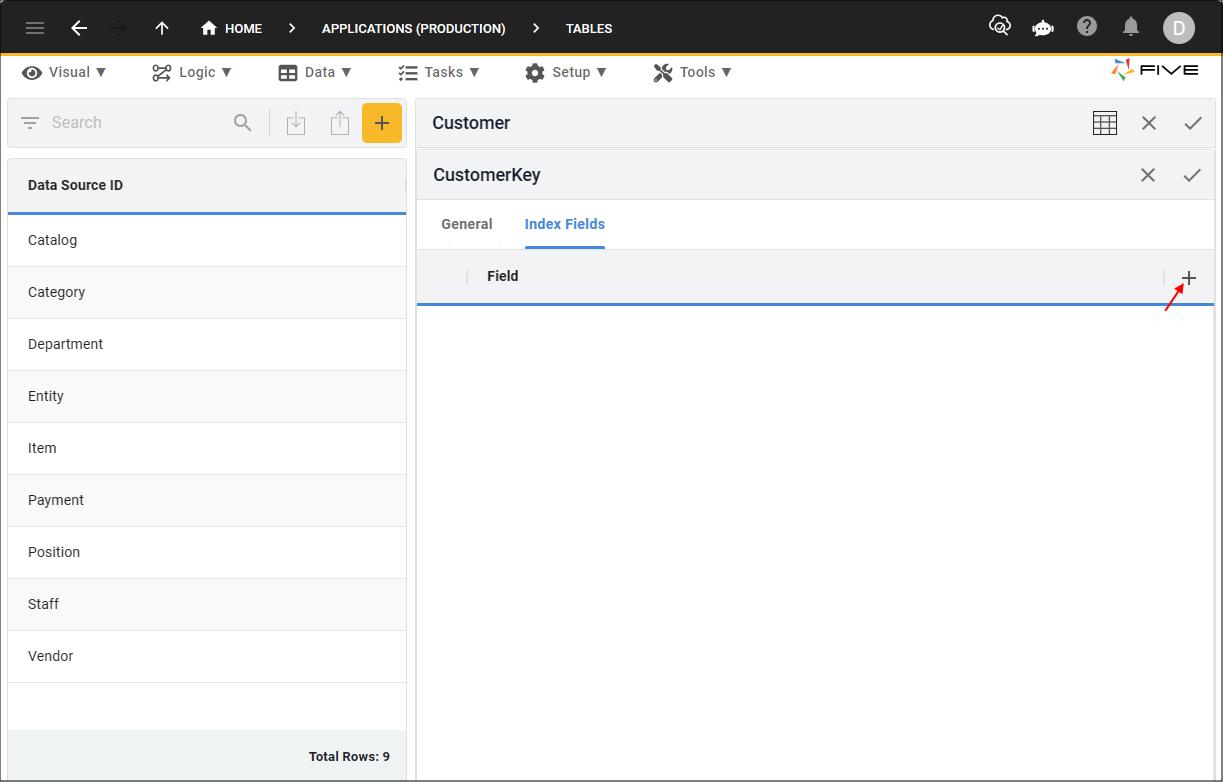
Figure 11 - Add Index Fields button
19. Click the lookup icon in the Field field and select the primary key field from the current table.

Figure 12 - Add index field
20. Click the Save button in the form app bar.

Figure 13 - Save button
21. Click the Save button in the form app bar above the list.
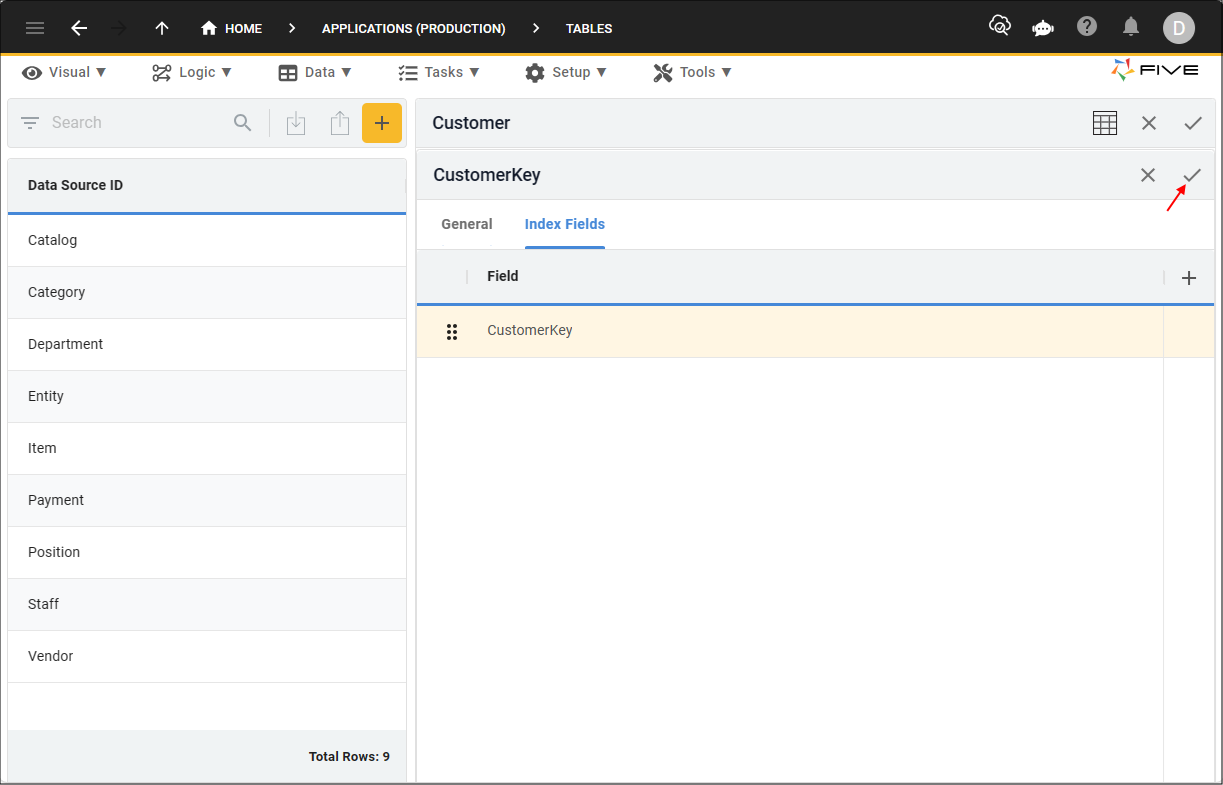
Figure 14 - Save button
Add the Dependent Index
22. Click the Add Indices button.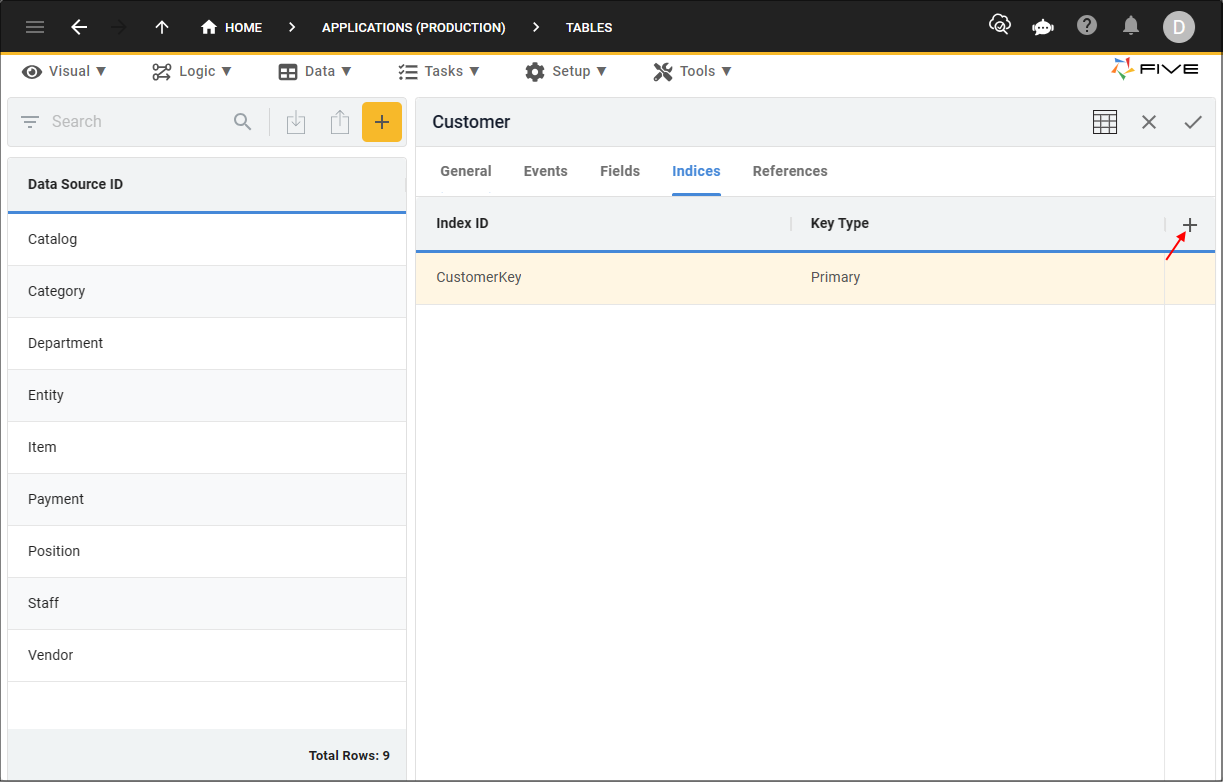
Figure 15 - Add Indices button
23. Type an ID in the Index ID field.
24. Click the lookup icon in the Key Type field and select Dependent.
25. Click the lookup icon in the Foreign Data Source field and select the parent data source.
info
Five will automatically populate the Dependent Index field with the primary key for the selected data source.
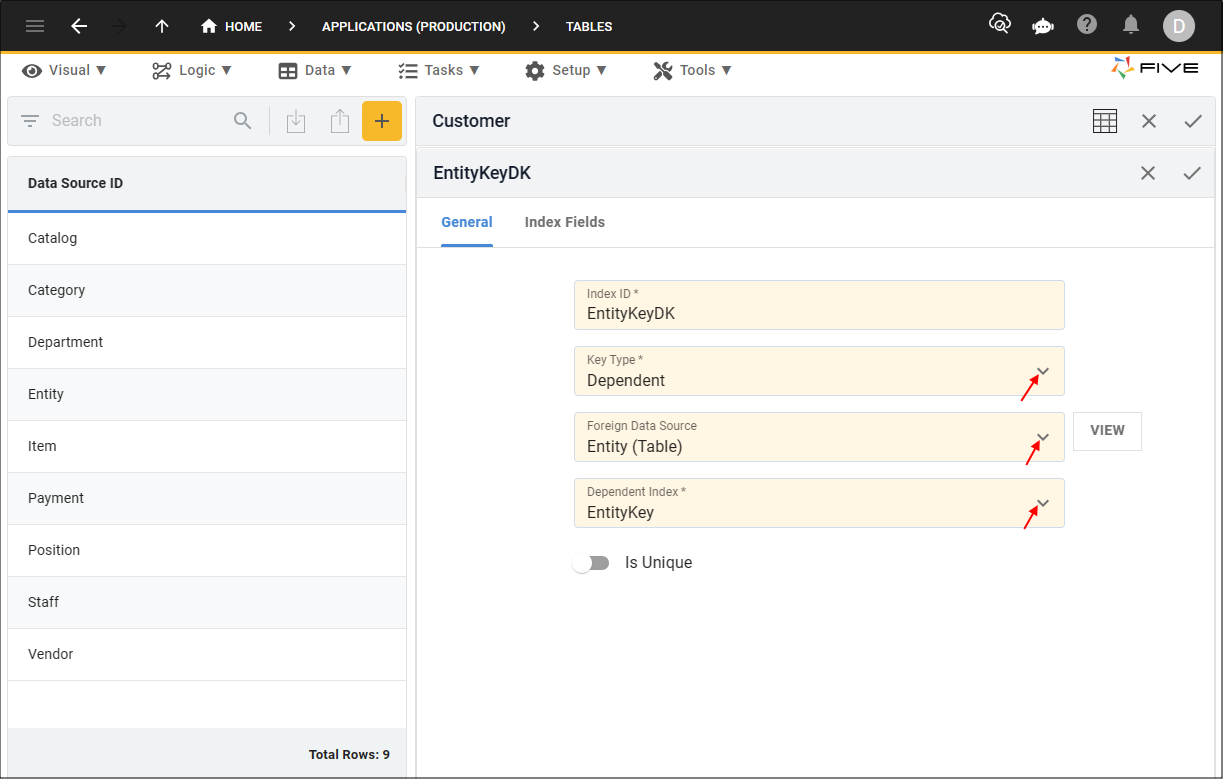
Figure 16 - Add the dependent key
26. Click the Index Fields tab.

Figure 17 - Index Fields tab
27. Click the Add Index Fields button.
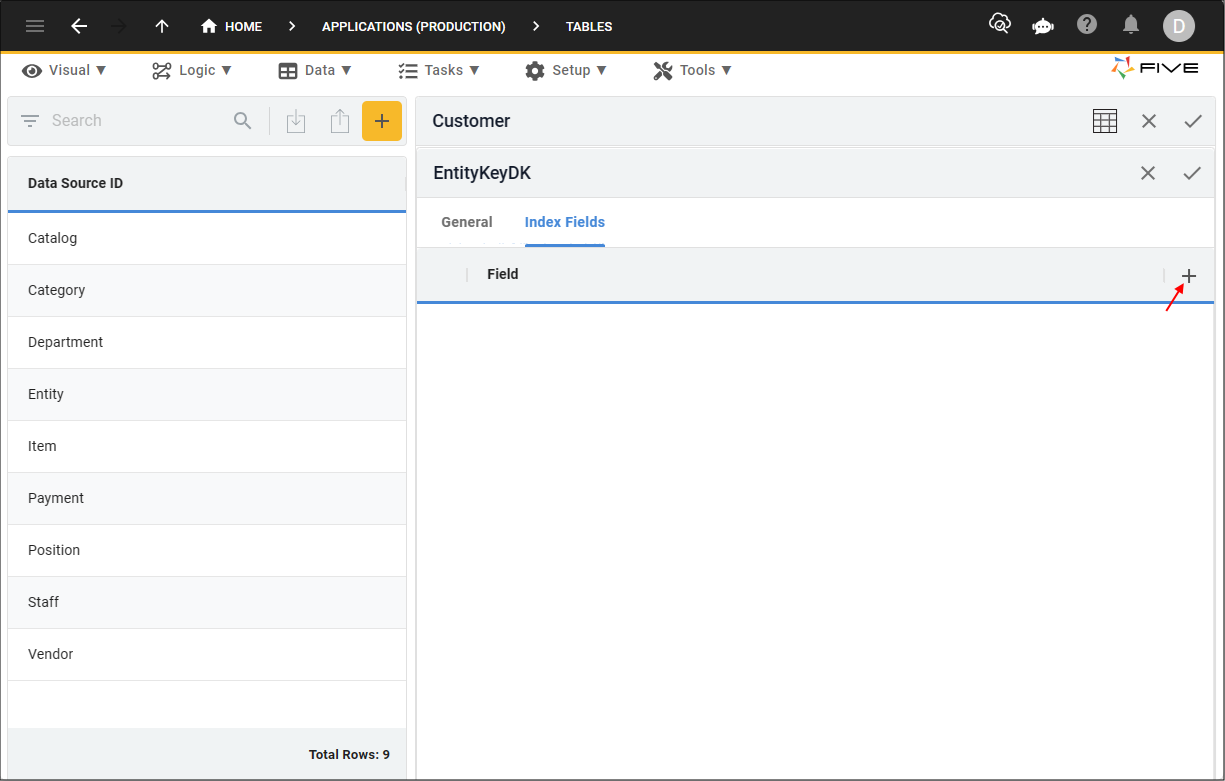
Figure 18 - Add Index Fields button
28. Click the lookup icon in the Field field and select the primary key field on the current table.
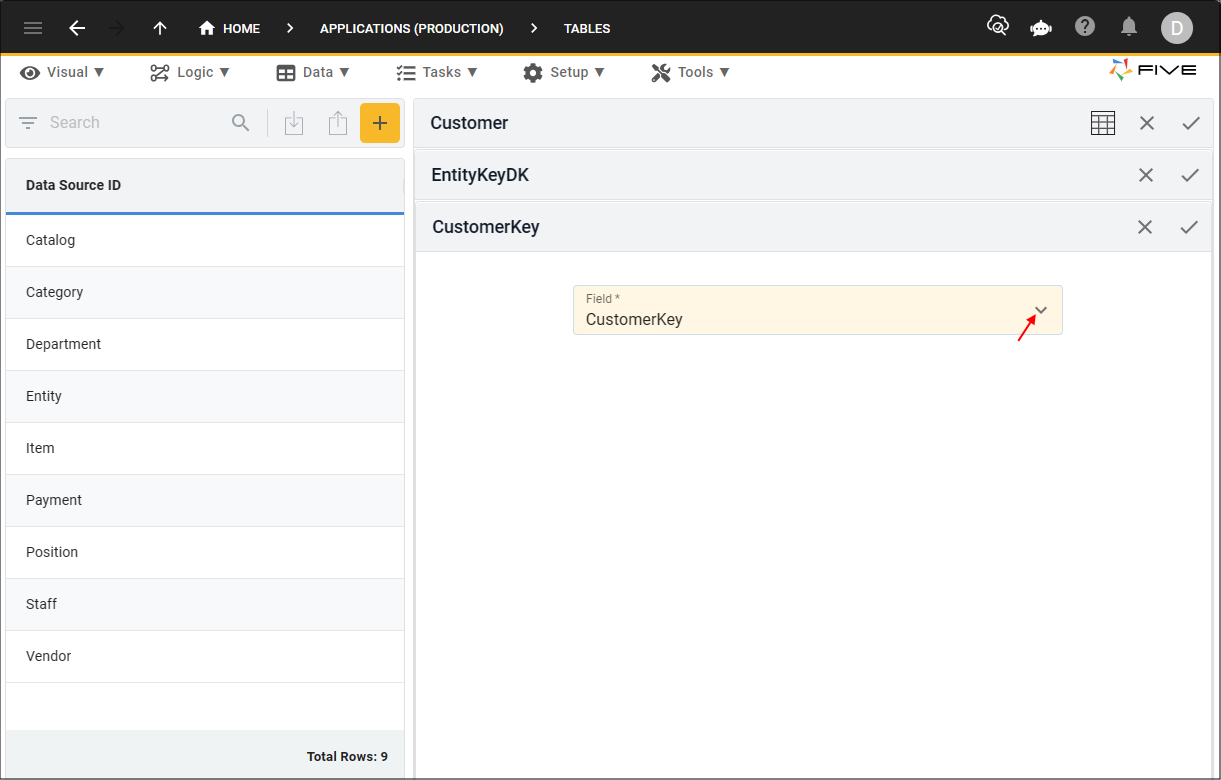
Figure 19 - Add index field
29. Click all three Save buttons in the stacked form app bars.
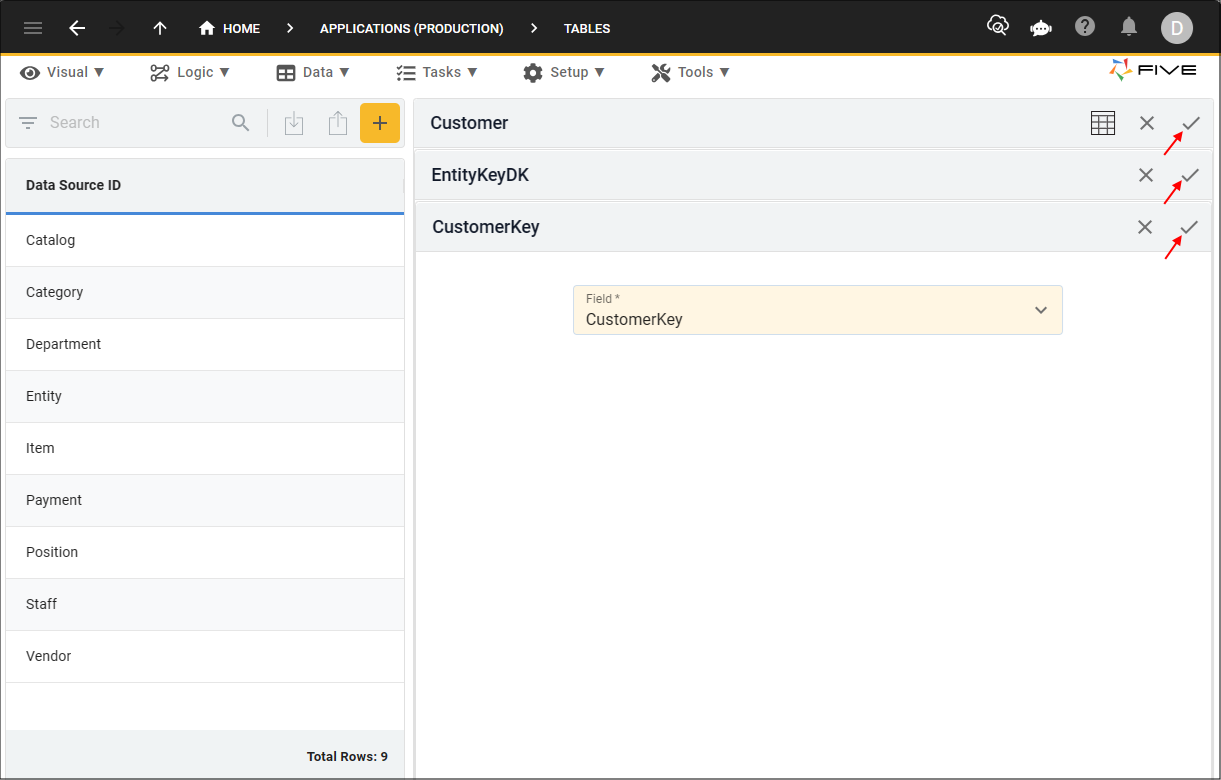
Figure 20 - Save buttons
30. Click the Save button in the Table Upgrade window.
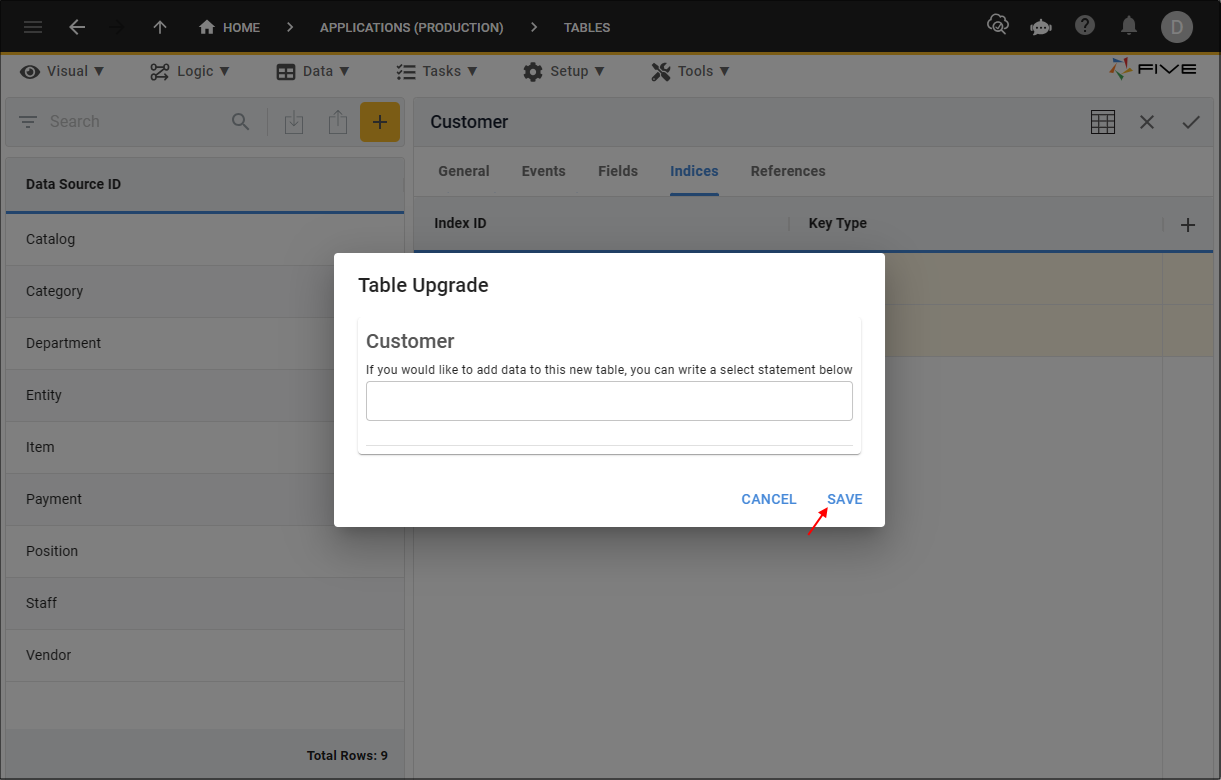
Figure 21 - Save the table upgrade